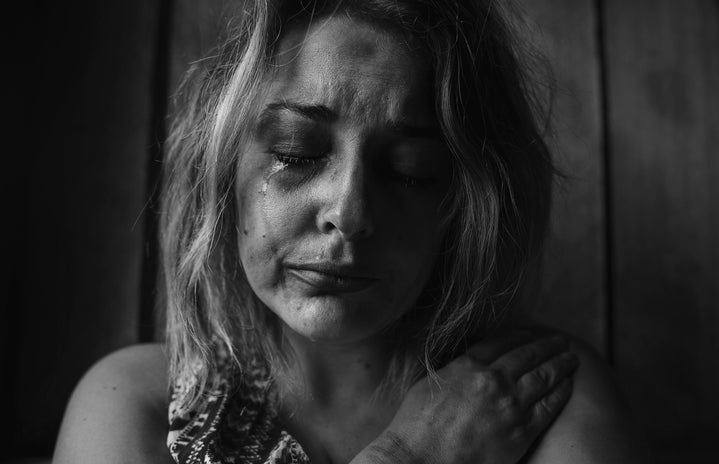Being “tragically beautiful” isn’t a new concept by any means – the trope of the troubled girl dates as far back as Cleopatra to as recent as the “Sad Girl” pandemic. While the aestheticization of being a troubled and misunderstood girl has provided solace to the outcasts of the world – seen more specifically through the rise of artists like Lana Del Rey who amassed their cult following by creating a niche of “Sad Girl” Pop which millions identified with – it creates a deadly and often constrictive box that becomes harder to shed the more that female pain and suffering are romanticized.
What Exactly Is Being Tragically Beautiful And Where Did It Come From?
While the tragically beautiful aesthetic we see today features mainly female artists, the trope originated in a misogynistic context, and to this day, female pain is often exploited for content. Perhaps the most famous example of this can be seen through Shakespeare’s Ophelia – driven to madness and tragedy in her death because of her family and love for Hamlet.
Being “tragically beautiful” – based on how the phrase is most often used – means though a woman is devastatingly beautiful, it’s built on the premise of sorrow and gloom, that she can’t ever be happy and content, thus making her so heartbreakingly beautiful. Her identity centers around being in a perpetual state of pain and suffering – one that used to be in the context of her relationship with the men in her life and now is more frequently associated with melancholic feelings in general.
This trend is dangerous because it propagates the idea of needing to engage in destructive behavior or be insane in order to be perceived as a beautiful mystery by society. More than this, the exploitation of tragically beautiful women by media and entertainment industries is an ever bigger problem as it boxes women into categories that diminish their identities, not allowing them to grow or be known for anything more than the gloom which surrounds them. Again, the best example of this is the exploitation of Marilyn Monroe – capitalized and exploited for her trauma, she’s now known for little else than being Hollywood’s most tragic story. Media capitalizing on women’s trauma is nothing new but there has been a distinct uptick with the rise in popularity of artists such as Lana Del Rey and Billie Eilish whose brands center around the melancholy of being a woman.
What Is The Problem With Aestheticizing Pain?
Aestheticizing pain and suffering is one way to cope with turbulent and chaotic emotions, it’s a slippery slope as to when this coping turns into an inescapable facet of one’s identity. Especially with artists like Lorde and Lana Del Rey who were criticized when they tried to release music that was more positive – they were accused of abandoning their images – they’re seemingly not allowed to leave their aforementioned box of being the “Sad Girls” of the music industry.
Much like romanticizing the notion of the troubled artist, the Sad Girl pandemic romanticizes pain and suffering, resulting in the content coming out of artists commonly associated with this trope staying constricted in negative spaces to produce the aesthetics expected of them. It propagates an identity borne out of misogyny and forces women to often relive the trauma in the exploitation of their pain or doesn’t allow them to grow as artists, out of the box they started in.
So What Does This Mean?
The Sad Girl pandemic is being reclaimed by women as a way to share their pain and relate to each other in the grand span of the female experience, but the fixating on, and the excessive capitalization of women’s trauma needs to stop somewhere. Artists need to be able to grow on their own and be recognized for things outside of their trauma. We need to appreciate talents as they are provided on a broader scale or we’ll be stuck once again forcing artists to feel pressured to engage in destructive behaviors to produce art.

